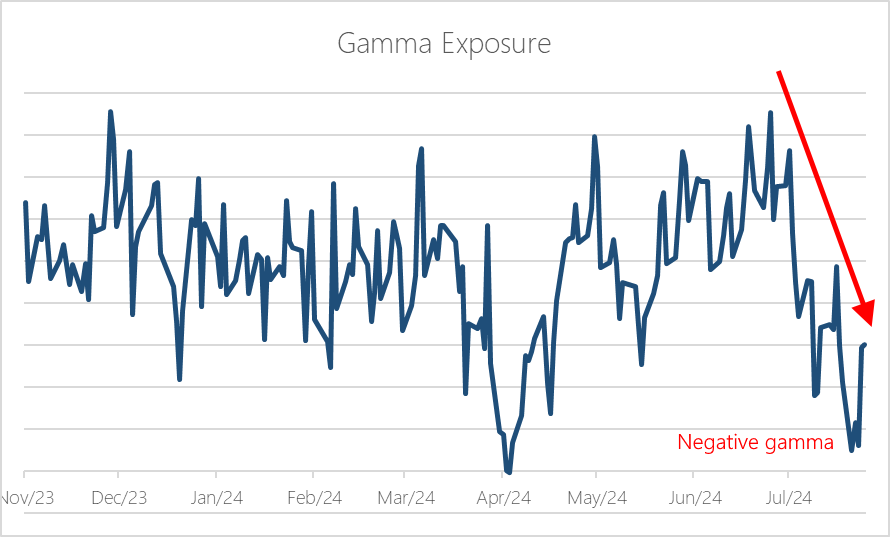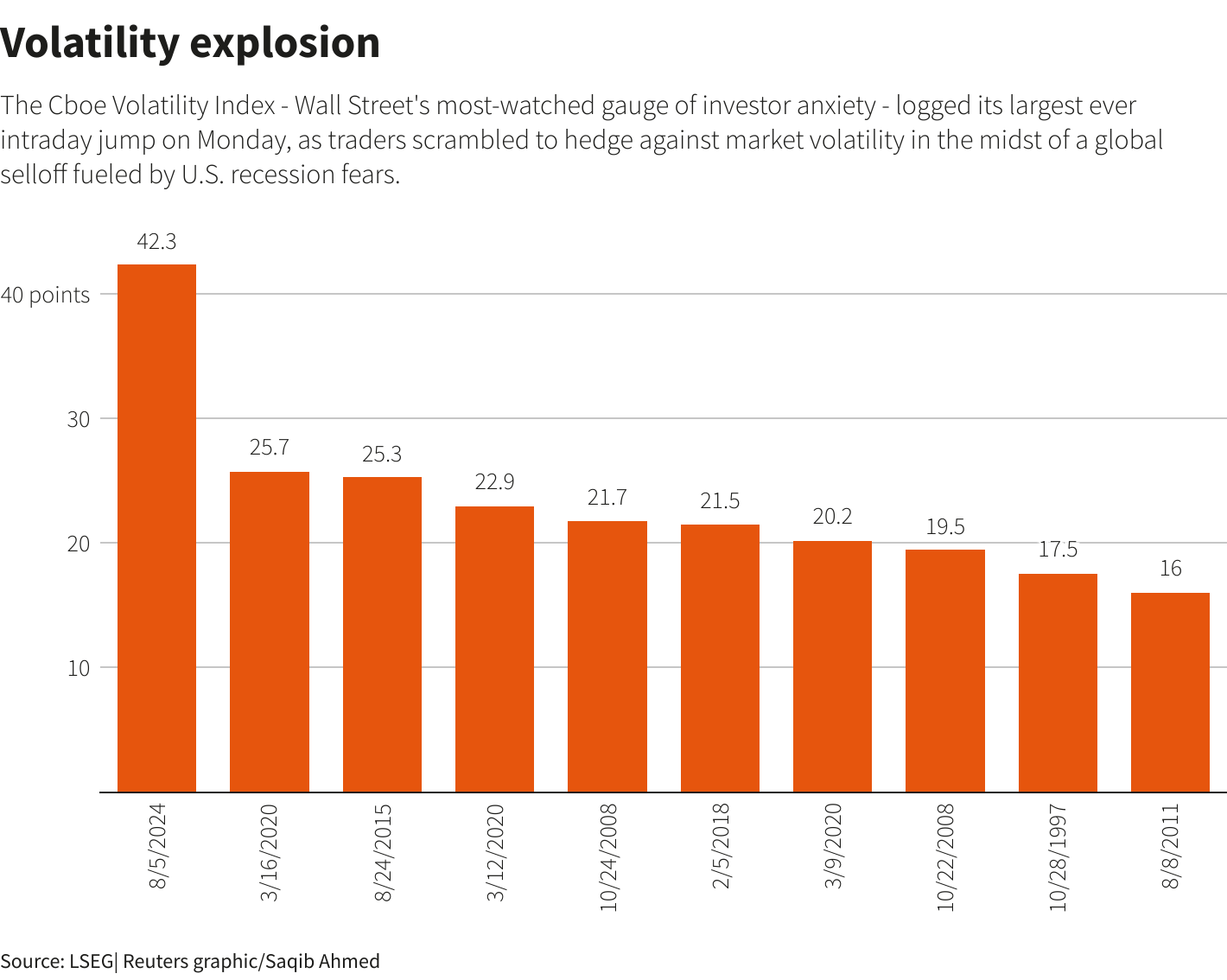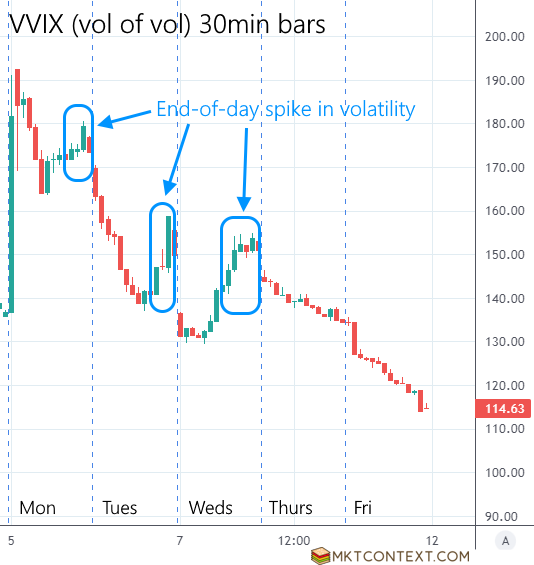🍔Extreme Volatility is a Trading Signal
Riding the volatility wave: Strategies for navigating turbulent markets
Hello Traders,
Today’s post is a Masterclass on Volatility.
I've been waiting a long time to write this piece because extreme volatility doesn’t happen often. I will be sharing with you volatility-based trading signals that few people talk about, but are incredibly useful right now.
I have used these signals throughout my career as a professional money manager to time the market when there is extreme volatility. I share them all with you in the premium section.
Topics inside: What is volatility, how vol reacted this week, timing the bottom, flows and positioning, macro, technical analysis, and trade ideas.
Please like and share this post with a trader you know!
What is volatility?
First things first, the VIX index is a measure of how volatile the stock market is. Low VIX means stocks stay in a relatively tight and calm range, while high VIX means you get whiplashed by big up and down swings.
In high-volatility regimes, the character of the market changes completely. You get huge crash-downs followed by massive dead-cat bounces that lure bulls in, only to get crushed. We need to understand how volatility and options trading affects market makers, because the macro/recession stuff doesn't matter as much in this regime. The tail starts to wag the dog, so to speak.
Why do we care as traders? Trading strategies behave differently in different volatility regimes. What works in low-vol markets (like "buy the dip") don't necessarily work in high-vol markets. In the spirit of the Olympics, here’s a tennis analogy: Even Rafael Nadal doesn't play well on grass courts. The point is, know your trading strategy and your ideal environment.
How volatility reacted this past week
On Friday August 2nd, VIX spiked above 20. Our analysis called for a choppy week based on the simple fact that high-volatility days tend to cluster together. We advised staying out of the market, which turned out to be prescient; we woke up Monday morning with the VIX at 65 (!).
A lot of people have been talking about the Japanese Yen carry trade. The bigger picture is that this was really a volatility explosion and deleveraging event. You see, a lot of people like to sell volatility on a regular basis. This means they benefit from calm waters. It’s a very profitable idea, but can leave you stuck with cascading losses when volatility rises.
Coming into this year, volatility was being suppressed by all these short-vol strategies. Examples would be ETFs selling options, 0DTE trading, dispersion trades, momentum chasing, and of course, carry trades. This activity propped up the market and dampened moves. Selling begets buying, and vice versa, creating a stabilizing loop or “pin”.
When volatility rose last Friday, set off by the Yen moves and macro data, the market got dislodged from this equilibrium. Now, selling begets more selling, amplifying the moves. This is what we call negative gamma. You can see market makers’ gamma levels in the chart below. The lower we go, the more negative the gamma, and the more the dealers are forced to sell stocks into big drawdowns. It’s like being forced to keep doubling down on a bet as it keeps losing.
So market makers are stuck with cascading losses with no easy way to exit. As the pain became unbearable and market makers had to all exit at once, VIX spiked to 65 (its largest ever intraday increase ever) and the volatility of VIX (vol of vol, or VVIX) spiked to a level we hadn’t seen since Covid. It was a volatility explosion, much bigger than just a Yen unwind or recession scare.
As of the end of this week, we are still in negative gamma territory, so don’t be surprised if there are some volatile moves next week.
So when does it end?
The VIX drifting back down by the end of the week means vol sellers are coming back in. Remember those short-vol strategies who kept the market supported day after day? Those guys. Also, monthly options expiry resets some of the gamma. We need the August 16th options expiration to wipe the slate clean.
There's still negative gamma left in the market. This evidenced by SPX selling off into the close and VVIX spiking at end-of-day on Monday, Tuesday, and Wednesday. That’s a sign of risk managers being forced to close their positions by day’s end.
When vol gets rocked to this degree, it doesn’t immediately bounce back. The large funds who blew their risk budgets won't want to dump more money back into the trade. So the systematic vol sellers won't be back in full force for a while.
But vol is naturally mean-reverting. After an extended period of calm, vol sellers will step back in because the trade is too lucrative not to. The Yen trade is already ~80% unwound. It could still be choppy, but I believe we are nearing a bottom.
When the VIX surges as much as it did, the market usually bottoms within a week or two. In fact historically speaking, when the VIX is above 35, forward returns in the stock market are almost always really good; up to 28% in the subsequent year.
To recap: Vol sellers stayed at the club dancing for a bit too long. When the lights came on, everyone rushed for the exits. Those guys and gals won’t be back soon.
Behind the paywall, we discuss hedge fund positioning, the health of the macro economy, our key technical indicators, and trades for this week. Upgrade your membership so you don't miss out on these money-making opportunities! Claim your free trial below
Keep reading with a 7-day free trial
Subscribe to MKTCONTEXT to keep reading this post and get 7 days of free access to the full post archives.









